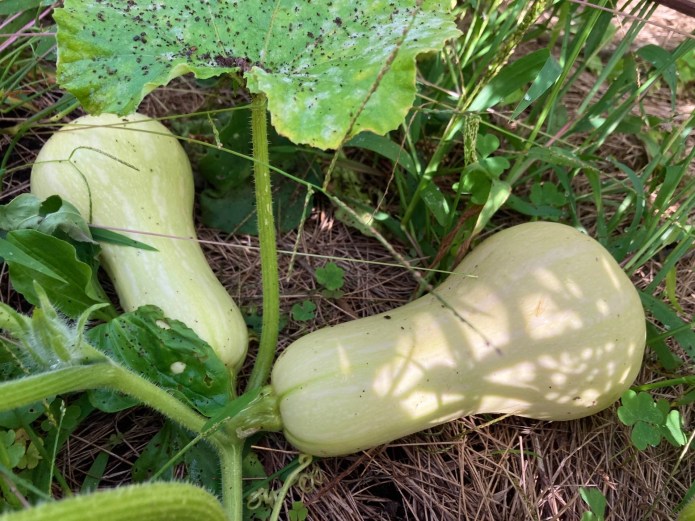
Every year, I strive to prolong the season by preserving vegetables (cucumbers, tomatoes, hot peppers, winter squash, garlic) and herbs (Italian basil, Thai basil) from the garden. I do not can my vegetables in a way that makes them shelf-stable. The methods I use are quick-pickling, curing/drying, slow-roasting and freezing. This year, I had a decent harvest of pickling cucumbers, and I quick-pickled several batches, one to two jars each. I also pickled green cherry tomatoes at the end of the season.

I cured my garlic and my three (!) shallots, as well as my pathetic squash harvest (two small butternut and three small Delicata squash). For the first time, I oven-dried garlic scapes and turned them into a very fragrant and delicious garlic scape powder, which I am using in my cooking instead of garlic powder. I also slow-dried my super hot Thai peppers in the oven (at 175 F for several hours, checking first every 60 then every 30 minutes until they start to become brittle).

I slow-roasted several batches of tomatoes and made one big batch of garlic scape pesto, two batches of regular pesto and tree of Thai pesto. The tomatoes are topped with olive oil and frozen for future use. If not used immediately after making it, the Italian pesto is frozen in ice cube trays, covered with olive oil. This makes it easy to use. I just thaw a few cubes to use as pizza topping or for pasta. I freeze the Thai basil pesto straight in the jar (covered with sesame oil), as each batch makes one recipe for the crispy pork noodle bowls that we all love so much.
























